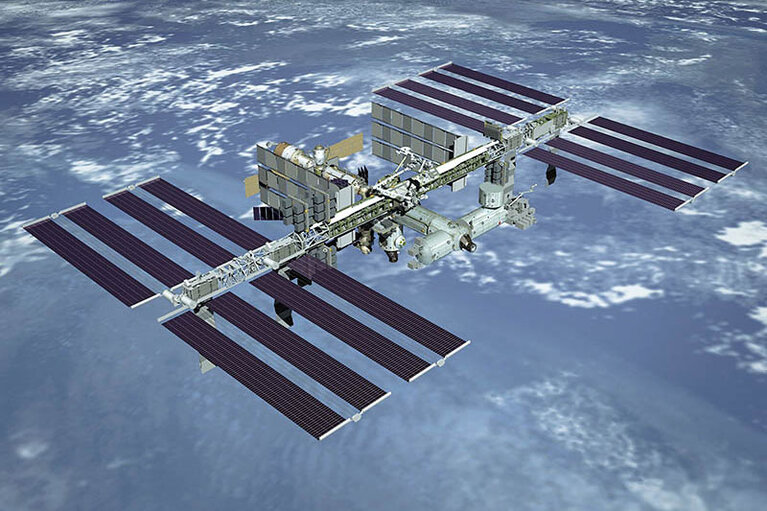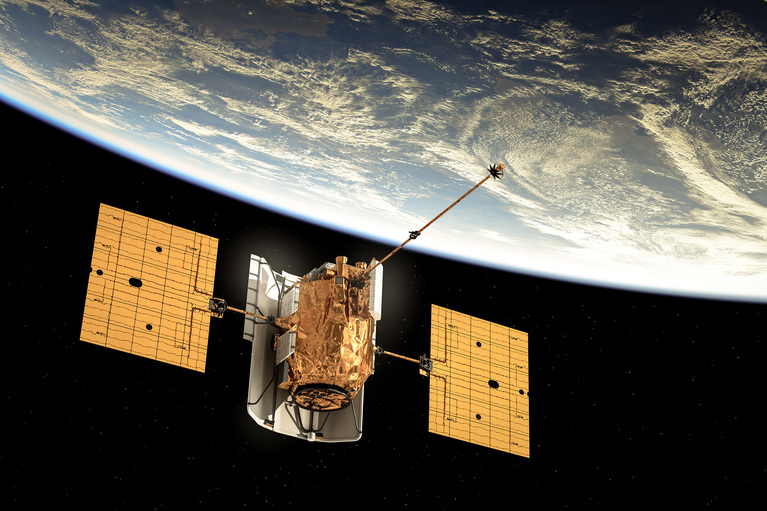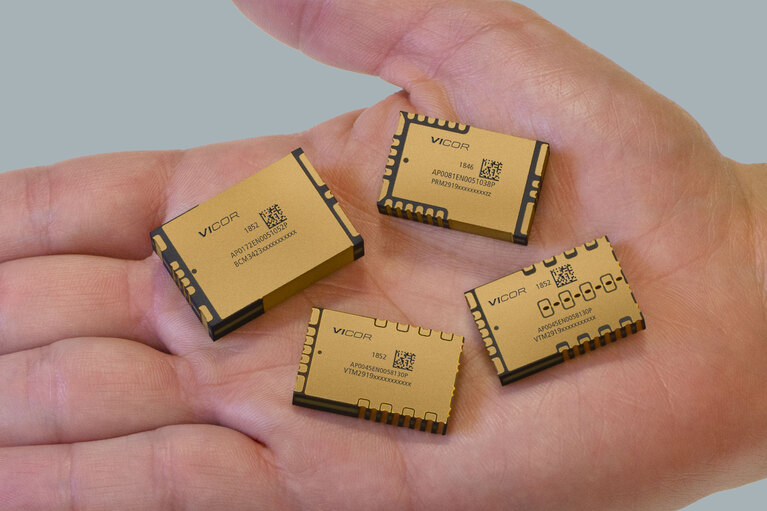
Power delivery networks for New Space
Space is an unforgiving environment demanding flawless reliability. Vicor radiation-tolerant power modules are proven to withstand the rigors of New Space
Is it really possible to make broadband widely accessible to all underserved segments of society in an effort to reduce poverty? Where terrestrial broadband falls short, satellite offers promise.
By Rob Russell, VP of Satellite Business Unit
As demand for internet bandwidth continues to soar, terrestrial broadband has been slow to respond; in part because it is economically impractical to service nearly half the world’s population. However, it is an important endeavor, and making broadband widely accessible to underserved segments of society reduces poverty, improves standards of living and is a core enabler of economic growth.
Where terrestrial broadband falls short, SATCOM is poised to solve this problem. Satellite communications providers and OEMs are striving to develop products to take advantage of this explosive growth opportunity. The efforts of companies such as Boeing, which is providing satellites to European service provider SES for their aptly named O3b (other 3 billion) constellation, and SpaceX, with their rapidly growing Starlink constellation, are leading the way to leveling the playing field for billions of people. In order to realize both the societal and market opportunity, satellite communications providers and OEMs are planning to deploy enough capacity to increase overall bandwidth by at least 20x over the next five years. Boeing, OneWeb, Viasat, SpaceX and others are projected to add over 100,000 satellites in the next 10 years, all looking to stake their claim in the new space race. To accomplish this, the industry is undergoing a massive paradigm shift in how they design satellite systems, creating significant churn, but also significant opportunity for innovative approaches and new companies to participate in the growth.
A key element in solving the overall problem is solving the power problem. New Space satellite communication solutions demand high-performance processing, which in turn, requires more power. Limited space and weight budgets therefore put a premium on advanced power solutions with high density and high efficiency to enable these advanced communications systems.
To compete with terrestrial solutions and capture the expected share of internet bandwidth growth over the next five to 10 years, space-based solutions must compete on capacity, coverage, latency and overall cost compared to terrestrial solutions. To be competitive the key strategy that New Space companies have converged on is to deploy large numbers of smaller, connected satellites in Low Earth Orbit (LEO) and Medium Earth Orbit (MEO) constellations.
Deploying hundreds or thousands of satellites in lower orbits creates some significant challenges for system architects and developers. The cost for a satellite, including the launch cost, has to be reduced by at least an order of magnitude compared to geostationary (GEO) and deep space satellites to make this solution economically viable. To achieve the cost reduction they need to increase throughput per satellite and reduce both size and weight.
At the same time, the number of satellites that can be deployed is finite and restricted by international governmental allocation, so there is an even stronger incentive to maximize the throughput capability of each satellite. These diametrically opposing requirements— shrinking the size and cost of the satellites while increasing their performance—along with the reduced radiation exposure of lower orbits, create several design drivers that differ from classic space applications.
One way developers are tackling this design problem is to use increasingly sophisticated onboard processing capabilities. The use of the latest ultra-deep-submicron FPGAs and ASICs that have demanding, low-voltage and high-current power requirements is becoming more commonplace as a way to maximize performance in the smallest possible space. The need for more advanced solutions also drives the mission length, because as technology improves, companies will need to refresh the satellites quicker to take advantage of the latest-and-greatest offerings. The typical LEO mission duration and optimal time to upgrade the technology is three to seven years. This can be an expensive proposition, and since they will only have approval for so many satellites, companies will have to replace them instead of add to them. The shortened mission length also requires a different mindset when it comes to the time-to-market (TTM), cutting the typical seven- to 10-year development and production cycle times by half or more. The good news is that the lower orbits inside the Van Allen belt, along the with the shorter mission profile, significantly reduce the amount of radiation hardening needed. This in turn allows for use of more sophisticated, less expensive COTS-type products with lower levels of radiation tolerance required for the mission. The TTM requirements drive further change.
Developers are looking to develop with modular, COTS-type components to increase reliability, to reduce qualification and test time and to allow for much faster and more predictable design cycles.
TTM requirements coupled with the sheer volume of satellites that OEMs need to produce put a greater burden on manufacturing capacity and capability. Modular components are typically built-in modern manufacturing environments and are robust and scalable on a commercial level, which contrasts with legacy space-grade components that are typically handcrafted in small batches for missions requiring a smaller number of satellites with a higher degree of radiation hardness.
Similar to other satellite system elements, most existing space-grade isolated and nonisolated DC-DC solutions were developed for deeper space missions and have a high degree of reliability and radiation tolerance. As such, they do not meet the density and efficiency needs for New Space applications. The manufacturing requirements for these fully radiationhardened solutions necessitate hermetically sealed packages and small-batch production with extremely long cycle times driven by a high percentage of manual labor and extensive testing. A different type of PDN solution is needed to meet the performance requirements of New Space applications, while still providing adequate radiation tolerance. To enable the improvements in size, weight and cost afforded by the utilization of advanced communications processors, as well as improve TTM, an advanced PDN capable of delivering high currents at low voltages using dense, efficient, modular components is a must-have.
Compact modular power components will significantly reduce the size and weight of the overall PDN in three ways:
In general, improving the efficiency and density of the PDN leaves more size and weight budget for the payloads and satellite subsystems. Delivering faster time-to-market, top performance and reduced risk and cost Vicor radiation tolerant power modules enable the ideal PDN for today’s LEO and MEO satellites, providing high efficiency, high density, low noise voltage conversion to power advanced network communication ASICs and processors. Reliability is enhanced with a dual power train topology, which, along with extensive qualification testing, enables our modules to meet mission TID and SEE radiation requirements.
Vicor modular solutions convert power from the source to the load, allowing developers to reduce TTM, risk, and cost, while maximizing board space utilization. The present Vicor product is capable of powering a 0.8V/150A and 3.3V/50A processor load from a standard 100V bus at efficiencies of up to 81 percent. Next-generation modules are in development and will improve end-to-end efficiencies and offer alternate bus solutions. Some of the differentiated benefits that the new Vicor rad-tolerant power modules provide are a 3 — 5x power-density improvement over the current best-in-class solutions, and a 50 percent reduction in power losses for 100V bus applications. Implementing a Vicor radtolerant solution will substantially reduce the overall board space and weight required by the PDN through best-in-class density, efficiency and noise signature.
Leveraging its longstanding heritage as an industry leader in both the COTS aerospace and high-performance computing processor power solutions, Vicor uses advanced packaging and standard high-volume SM-ChiP™ assembly techniques. All parts are manufactured in a US-based plant delivering a robust, scalable manufacturing capability that is ideal for today’s high-volume LEO and MEO challenges.
This article was originally published by Sat Magazine.
Rob Russell is currently the Vice President of Satellite Business Development and has worked at Vicor Corporation for over 10 years in various strategic marketing, product marketing, and business development roles. He has over 29 years of sales and marketing experience in the electronics industry. He earned both his BSEE and MBA at the University of Massachusetts. Before Vicor, he worked for Power-One as the Vice President of Product Marketing and Director of Global Strategic Sales.
Rob Russell, VP of Satellite Business Unit
Satellite solutions: High speed, low latency network coverage for the world
Article: Challenges and design considerations for designing a power delivery network for New Space
White paper: Delivering higher power density and low noise for New Space applications
Article: Space and satellite frequently asked questions (FAQs)
Radiation-tolerant power modules
Power delivery networks for New Space
Space is an unforgiving environment demanding flawless reliability. Vicor radiation-tolerant power modules are proven to withstand the rigors of New Space
DC-DC converters for NewSpace applications
Smaller satellites harvest less energy using a modular approach to minimize I2R distribution losses, maximize efficiency and improve transient response
For New Space satellites, radiation tolerance means new design hurdle
Vicor power modules are power dense, reliable and scalable. Furthermore, there are multiple benefits of soft switching in radiation-tolerant power systems
60th Annual AOC International Symposium & Convention
The premier EW and Radar technology event of the year











